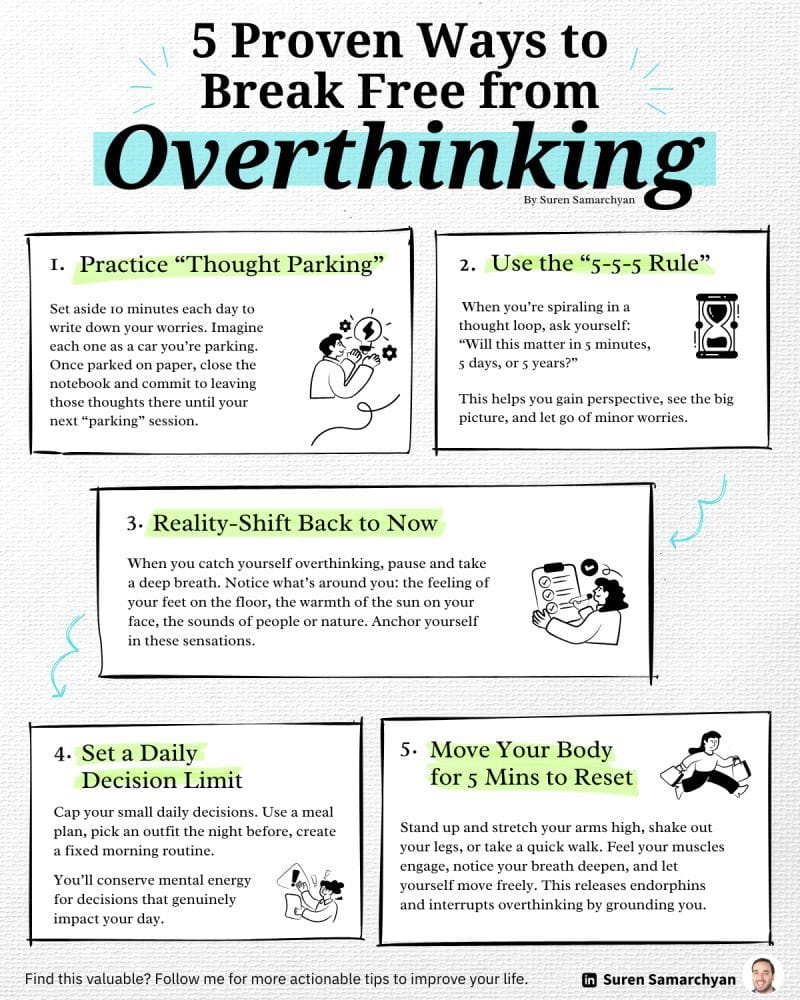Are you frequently overwhelmed by worries, even about minor things?
This could be a sign of anxiety.
While anxiety is a common feeling involving unease, worry, or fear - particularly during periods of uncertainty, change or high stress situations - if not addressed it can evolve to be pervasive.
Anxiety can make it difficult to focus on our work, and impact productivity and well-being.
According to a study by Champion Health in the UK, 60% of employees experience some form of anxiety.
This statistic is concerning, but what's more troubling is that many people suffer in silence, unaware or unwilling to acknowledge their struggles.
Throughout my journey, I've encountered numerous moments where, in retrospect, anxiety was a silent battle for me.
Externally, I appeared successful, but internally, I was wrestling with persistent worries and self-doubt.
Thankfully, with professional help and a supportive personal network, I've learned to better manage these challenges.
My experiences have underscored the need to openly discuss anxiety and educate ourselves on coping mechanisms and support options.
To get some practical insights and tips on this topic, I reached out to my friend Dana Berri.
Dana, a licensed psychologist, brings extensive expertise in applying Cognitive Behavioral Therapy (CBT) and Acceptance and Commitment Therapy (ACT) techniques.
Here are 3 invaluable tips she shared on managing anxiety:
1. Allow Yourself to feel anxious and Investigate:
Contrary to the common advice we often hear, telling us ‘not to worry’, a positive approach for managing anxiety involves intentionally allowing ourselves to explore these worries, and letting the worry run its course.
Ask yourself: ↳What am I thinking about right now? ↳On a scale of 1-10, how stressful do I feel? ↳Explore the worst-case, best-case scenario and the probability of each.
2. Reframe your thoughts:
Once you have identified these negative thoughts, try to transform them into more positive or constructive ones. E.g. ‘I will never be good at this’ to ‘This may be challenging now, but with practice, I can improve my skills over time.’
3. Implement realistic problem-solving:
Apply a problem-solving approach once you've identified and reframed negative thoughts.
1. Identify the Concern: ‘What's the specific concern that's causing anxiety?’
2. Ask the Right Questions: Instead of dwelling on the worst-case scenario, redirect your focus. E.g. ‘What aspects of this situation are within my control?’
3. Set Realistic Goals: E.g. If you're anxious about an upcoming presentation, dedicate specific time for preparation.
4. Consider the Variables: Determine which variables you can influence and take action. E.g. You can’t control your manager’s mood, but you can plan to leave home early to avoid peak traffic.
Looking for additional insights on the topic? Follow Dana Berri here on LinkedIn. She posts daily on the topics of psychology, mental health, mindset and therapy.

